
The Old House, ca. 1770
The city was founded in 1859 by dry-goods merchant Theodore Kimm, who named it after himself and his native city of Brunswick (Braunschweig), Lower Saxony, Germany.
Kimm purchased this land in 1850 for $20. When the railroad came through in 1858, he started selling lots in this area for the large numbers of tradesmen seeking inexpensive land within easy commuting distance of Saint Louis. Soon there were a number of businesses including greenhouses, quarries, an iron forge, mill, and a brewery. Jefferson County was rather late in being settled, and Kimmswick quickly became the second largest city in the county.
The construction of highways bypassing Kimmswick, as well as major flooding on the Mississippi River, seemed to doom this town until historical preservation efforts started in 1969.
The construction of highways bypassing Kimmswick, as well as major flooding on the Mississippi River, seemed to doom this town until historical preservation efforts started in 1969.
Numerous historic buildings have been preserved, restored, or reconstructed on this site, and this is now a tourist destination. Local websites are here and here.

Barbagallo House, ca. 1850
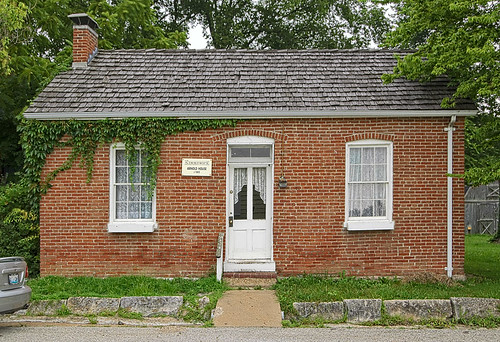
Arnold House, ca. 1865

Christmas in July. Women especially like this town, since it has many curio shops. If that isn't appealing, may I suggest taking a walk around town? The variety of sights is fascinating.
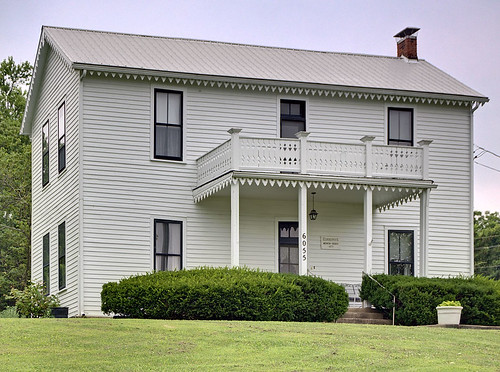
Wenum-Drake House, ca. 1877
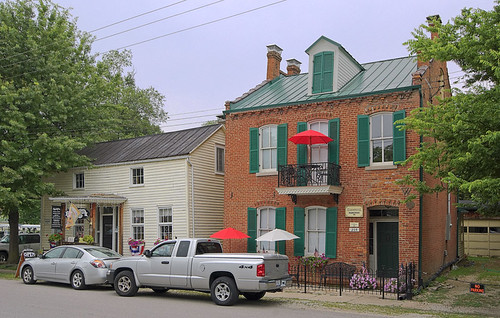
Wagner House, 1880
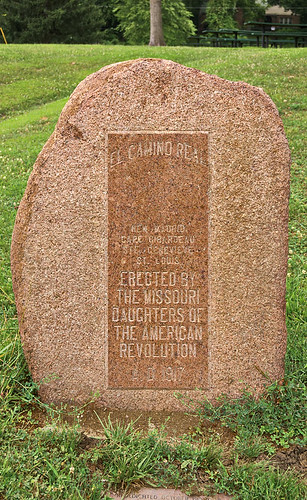
El Camino Real marker, put in place by the Daughters of the American Revolution
The Royal Road, or El Camino Real, was maintained by the Spanish Crown, and connected the settlements between New Madrid and Saint Louis. This is the oldest recognized road in Missouri, although a trail here was likely in existence for thousands of years, being heavily used by animals and by the Indians. For long-distance travel however, the nearby Mississippi River was the highway of choice, especially when transporting goods, and so most of the European colonial settlements were located on one of the rivers here. That pioneers of Scots-Irish descent tended to settle in the interior — rather than on the rivers — is what gives the Ozarks its distinctive culture.
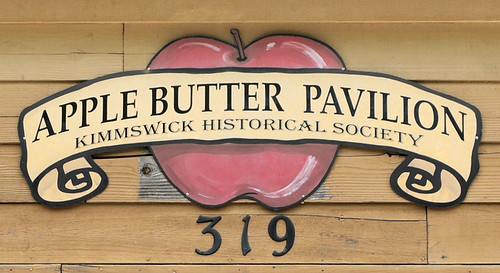
Apple Butter Pavilion
Apples are a major crop in the Saint Louis region, and Kimmswick hosts an Apple Butter festival in October, as well as a Strawberry festival in June. Apple butter is a caramelized and concentrated form of apple sauce, has a long shelf life, and is often used in cooking, especially when mixed with vinegar.
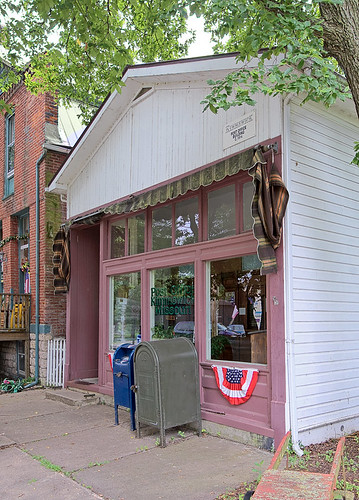
The Post Office, ca. 1914
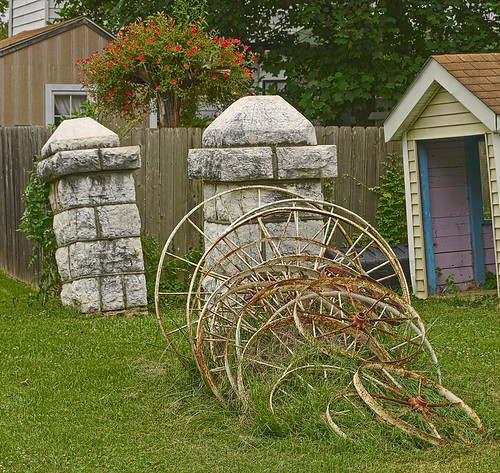
Old wagon wheels
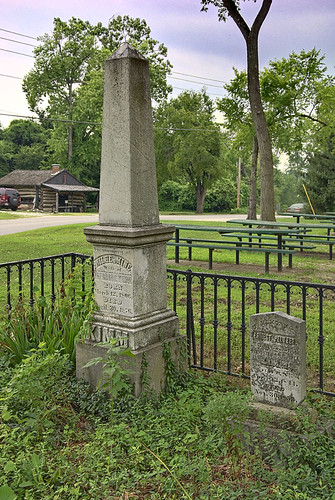
Graves of Wilhelmine Kimm, wife of Theodore Kimm, and their only son Ernest, R.I.P.
After his retirement, Theodore travelled extensively in Europe, making many ocean crossings, and died in Switzerland in 1886.
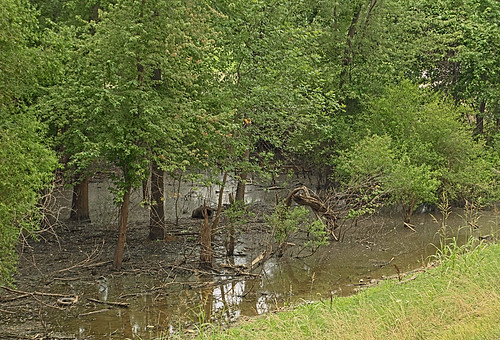
Swampy area on the west edge of town, near the mineral springs
A major tourist attraction in Kimmswick was Montesano Springs, an amusement park and spa, which operated from 1881 to 1918. Thousands of visitors daily would come from Saint Louis via railroad or steamboat, and could “take the waters” from the park's many therapeutic salt springs. The spring flow was between 1500 and 3000 gallons per hour, and the water was laden with sulfur, very blue in color and foul smelling, but was excellent for healing skin conditions. Taken internally, the water was cathartic. While I do not know if any remains of this resort still exist, you can still see ruins of the nearby Sulphur Springs spa on the west side of Highway 61 just south of Kimmswick. Montesano Springs was also the site of a salt-works dating from about 1779. An old scientific analysis of the waters can be seen here.
What attracted Americans for a few decades also attracted animals and their Indian hunters for thousands of years. To the west of town is the Mastodon State Historic Site, which preserves the Kimmswick Bone Bed, where the remains of many giant prehistoric beasts have been found. Salt springs attract mammals, and so this area is rich in archaeological finds.
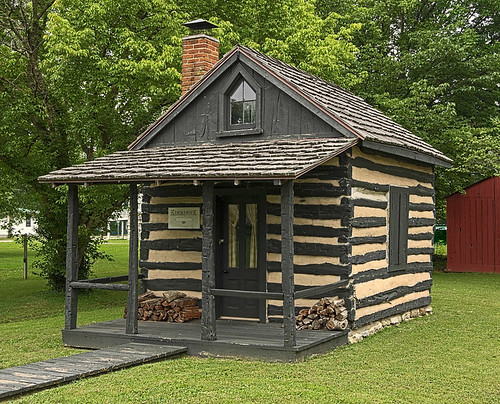
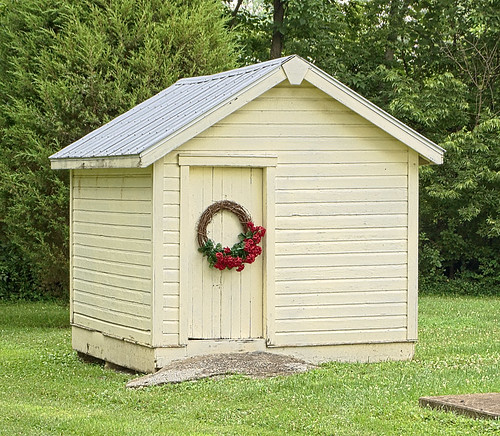

An abandoned building
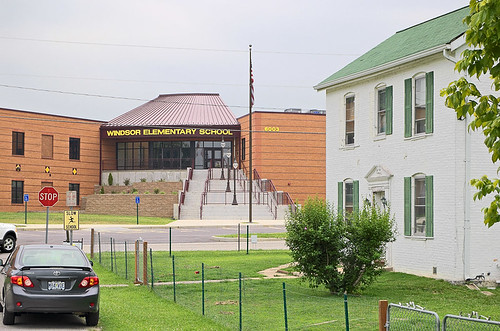
The old and the new: Windsor Elementary School
A visit to Kimmswick is no longer a drive in the country, due to the rapid suburbanization of northern Jefferson County. Here is a new public elementary school. The old Saint Joseph Catholic church and school were nearby, and since have been replaced by new structures to the west in the adjacent town of Imperial. Saint Joseph cemetery is on the hills north of town.
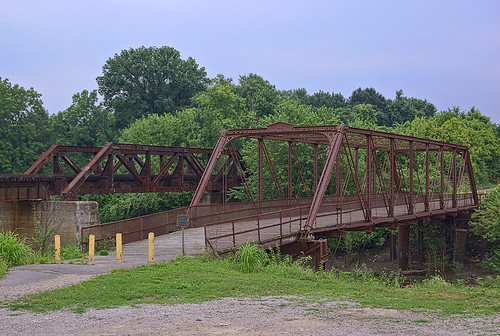
Railroad bridge, left, and the Windsor Harbor Bridge, right, cross Rock Creek, also known as Little Rock Creek
The touristic part of Kimmswick is located in a flood plain, in the part of town that originally housed workers and business. The Mississippi River, although very close by, cannot be seen from here due to a raised railroad bed. But on the other side of Rock Creek, on the river, is the Anheuser estate — of Anheuser-Busch beermaking fame — and the Windsor Harbor marina.
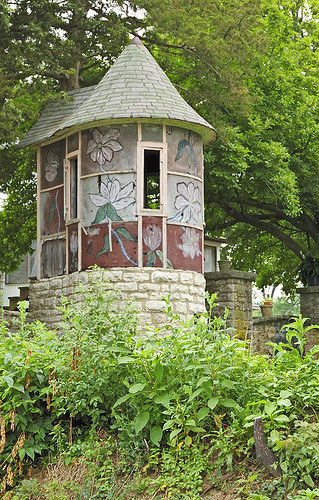
Decorative garden structure
Wealthier homes are located in the hills above the creek valley.
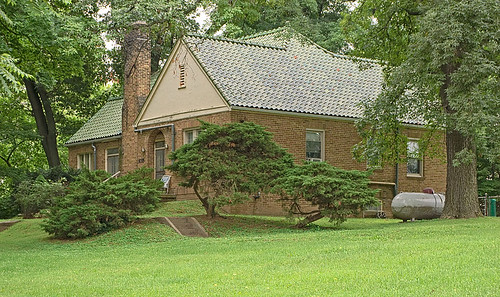

Swampy area on the west edge of town, near the mineral springs
A major tourist attraction in Kimmswick was Montesano Springs, an amusement park and spa, which operated from 1881 to 1918. Thousands of visitors daily would come from Saint Louis via railroad or steamboat, and could “take the waters” from the park's many therapeutic salt springs. The spring flow was between 1500 and 3000 gallons per hour, and the water was laden with sulfur, very blue in color and foul smelling, but was excellent for healing skin conditions. Taken internally, the water was cathartic. While I do not know if any remains of this resort still exist, you can still see ruins of the nearby Sulphur Springs spa on the west side of Highway 61 just south of Kimmswick. Montesano Springs was also the site of a salt-works dating from about 1779. An old scientific analysis of the waters can be seen here.
What attracted Americans for a few decades also attracted animals and their Indian hunters for thousands of years. To the west of town is the Mastodon State Historic Site, which preserves the Kimmswick Bone Bed, where the remains of many giant prehistoric beasts have been found. Salt springs attract mammals, and so this area is rich in archaeological finds.



An abandoned building

The old and the new: Windsor Elementary School
A visit to Kimmswick is no longer a drive in the country, due to the rapid suburbanization of northern Jefferson County. Here is a new public elementary school. The old Saint Joseph Catholic church and school were nearby, and since have been replaced by new structures to the west in the adjacent town of Imperial. Saint Joseph cemetery is on the hills north of town.

Railroad bridge, left, and the Windsor Harbor Bridge, right, cross Rock Creek, also known as Little Rock Creek
The touristic part of Kimmswick is located in a flood plain, in the part of town that originally housed workers and business. The Mississippi River, although very close by, cannot be seen from here due to a raised railroad bed. But on the other side of Rock Creek, on the river, is the Anheuser estate — of Anheuser-Busch beermaking fame — and the Windsor Harbor marina.

Decorative garden structure
Wealthier homes are located in the hills above the creek valley.



No comments:
Post a Comment